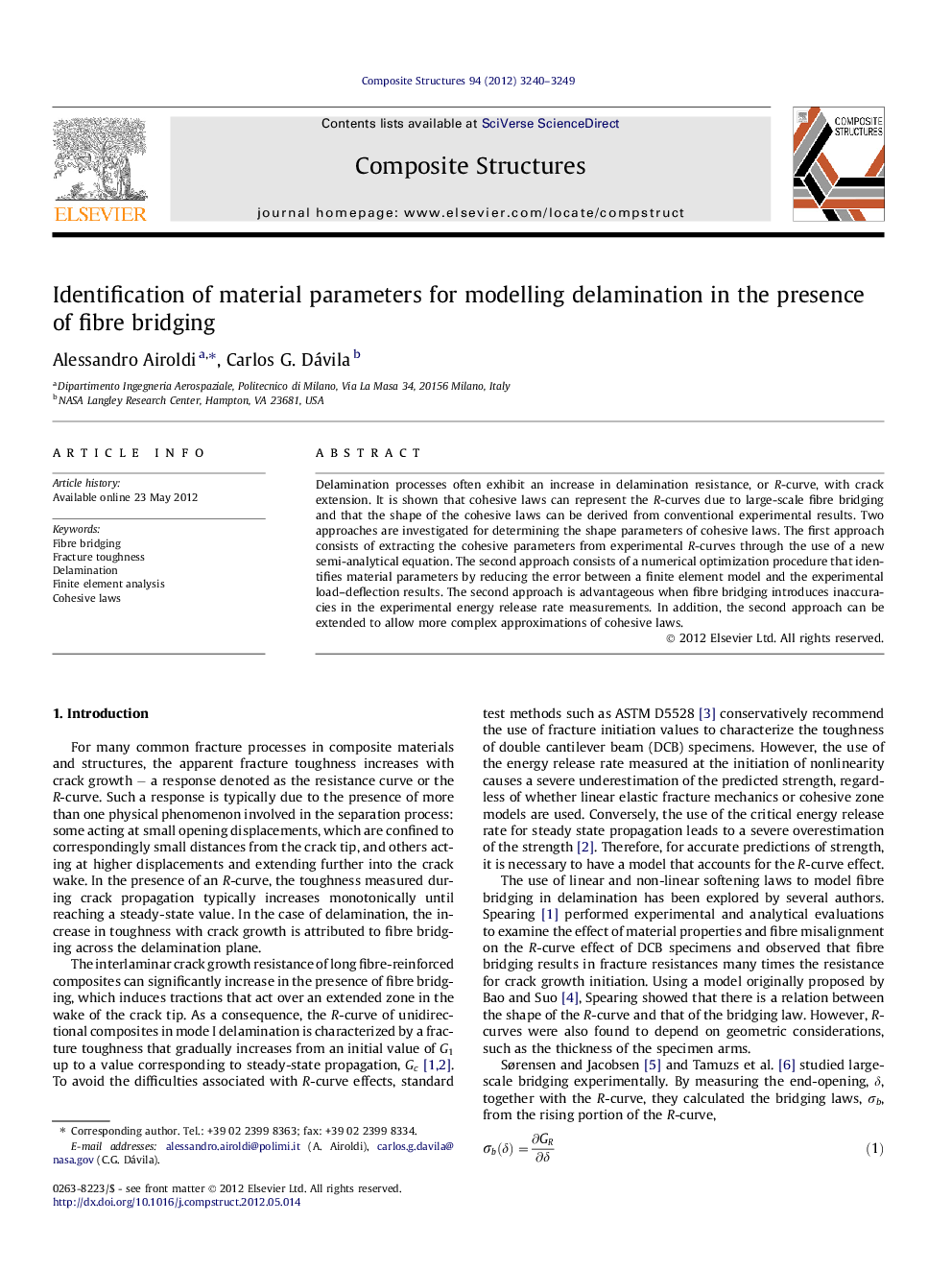| Article ID | Journal | Published Year | Pages | File Type |
|---|---|---|---|---|
| 252290 | Composite Structures | 2012 | 10 Pages |
Delamination processes often exhibit an increase in delamination resistance, or R-curve, with crack extension. It is shown that cohesive laws can represent the R-curves due to large-scale fibre bridging and that the shape of the cohesive laws can be derived from conventional experimental results. Two approaches are investigated for determining the shape parameters of cohesive laws. The first approach consists of extracting the cohesive parameters from experimental R-curves through the use of a new semi-analytical equation. The second approach consists of a numerical optimization procedure that identifies material parameters by reducing the error between a finite element model and the experimental load–deflection results. The second approach is advantageous when fibre bridging introduces inaccuracies in the experimental energy release rate measurements. In addition, the second approach can be extended to allow more complex approximations of cohesive laws.
